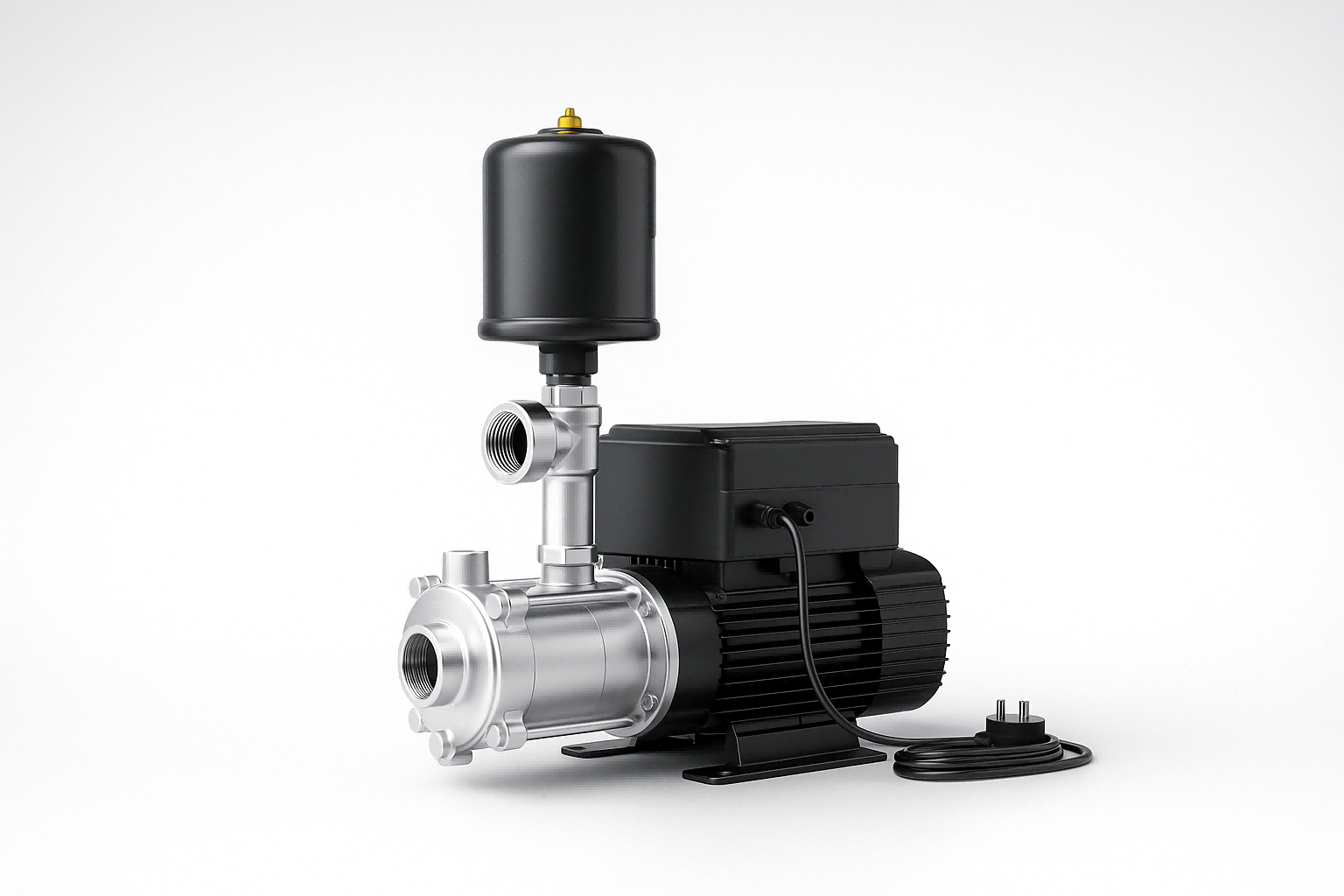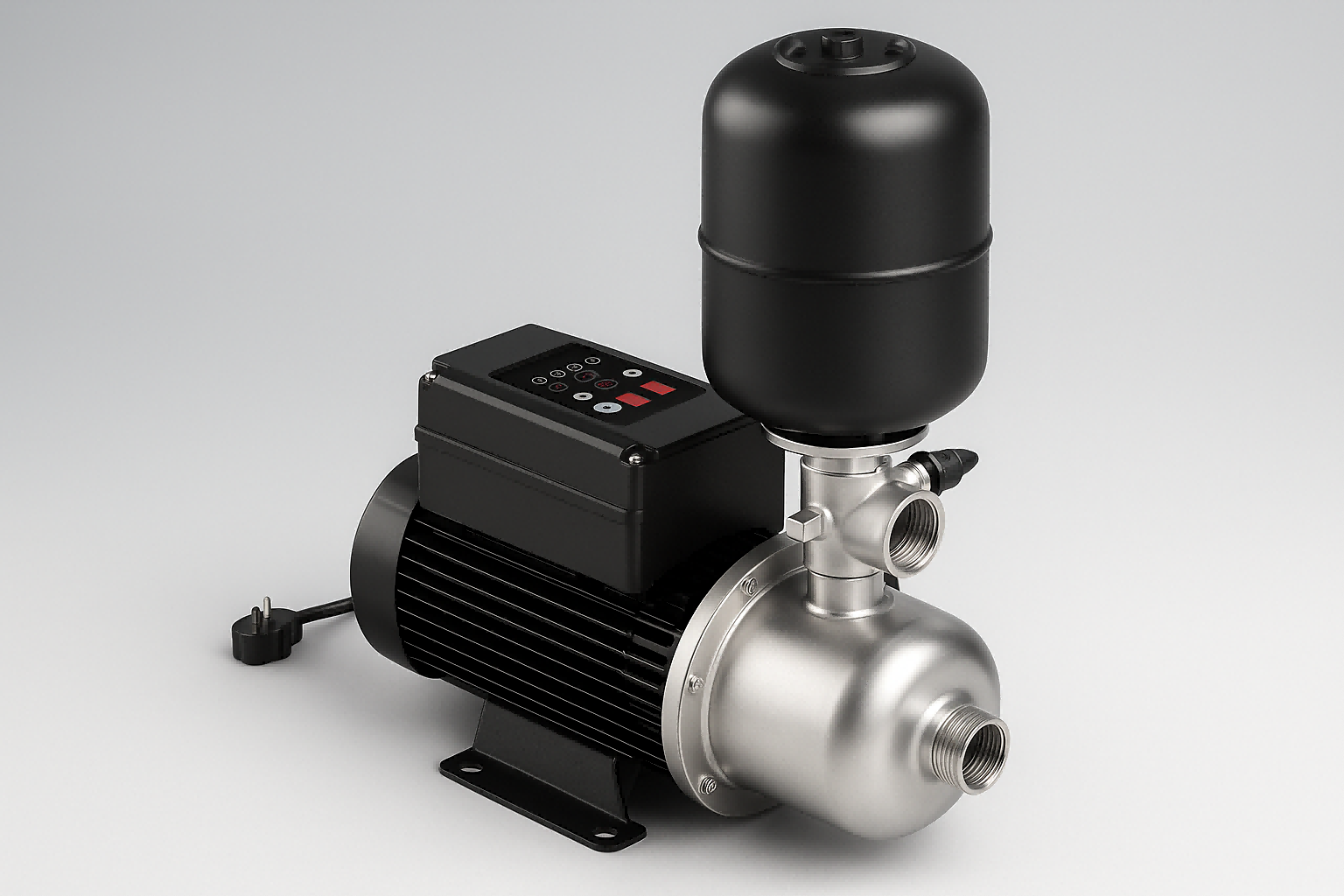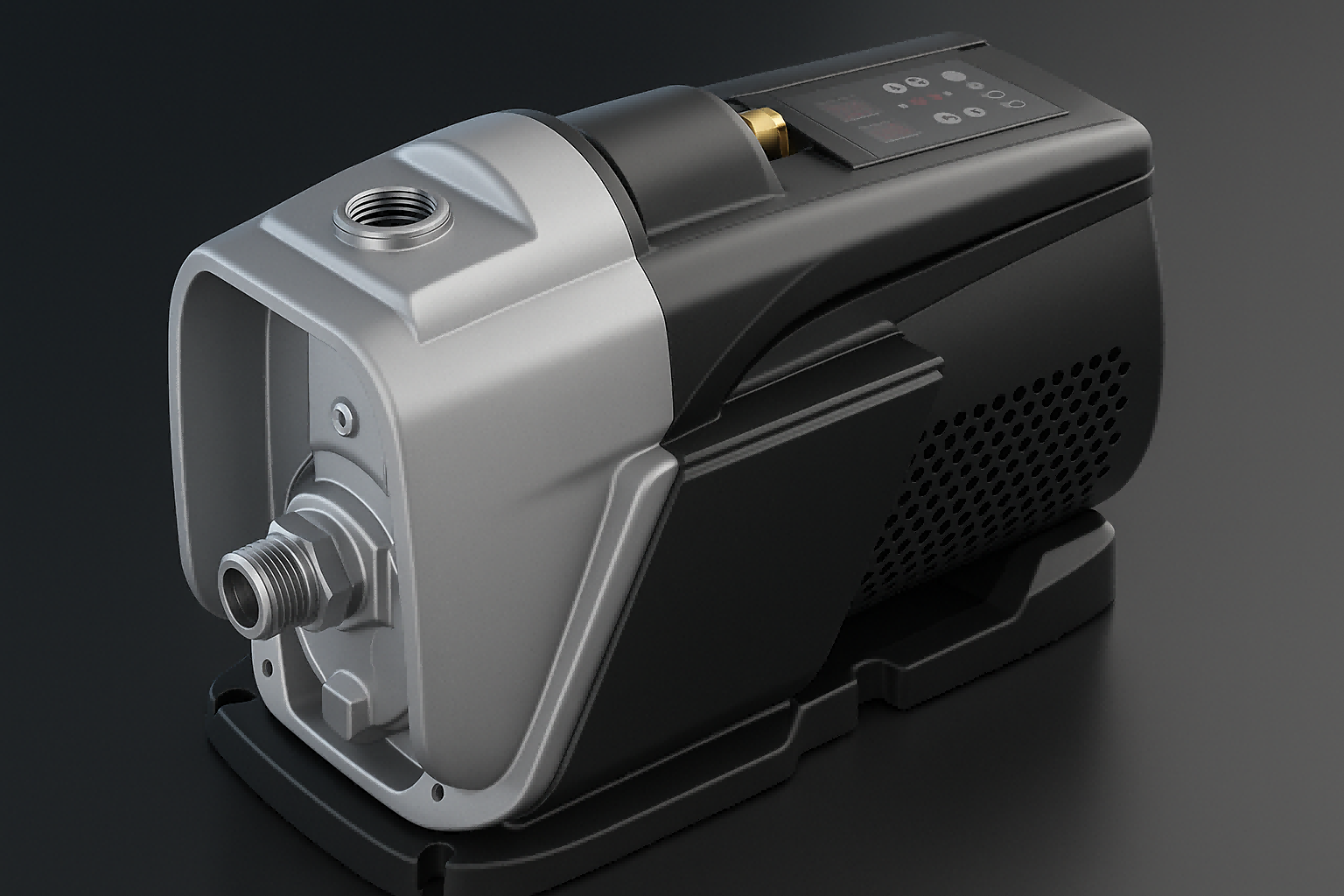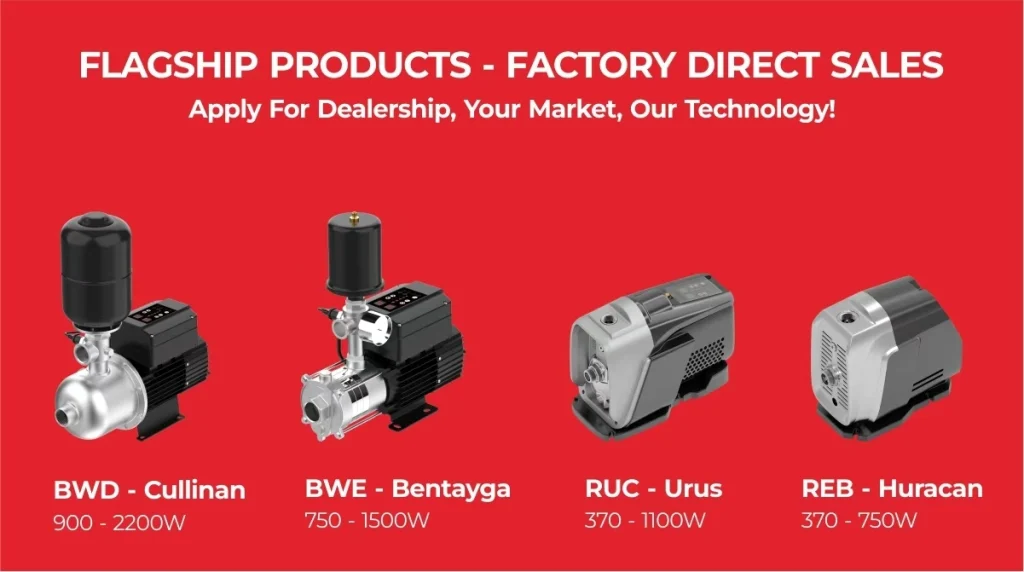Are you tired of pumps failing without warning?
This leads to costly downtime and unhappy clients.
Understanding what defines a pump's lifespan empowers you to choose reliability.
A premium VFD booster pump should last for many years, often exceeding a decade. Its true lifespan depends on the quality of its internal components, the intelligence of its protective systems, and proper system maintenance. Choosing a well-engineered pump from the start is the best guarantee of longevity.
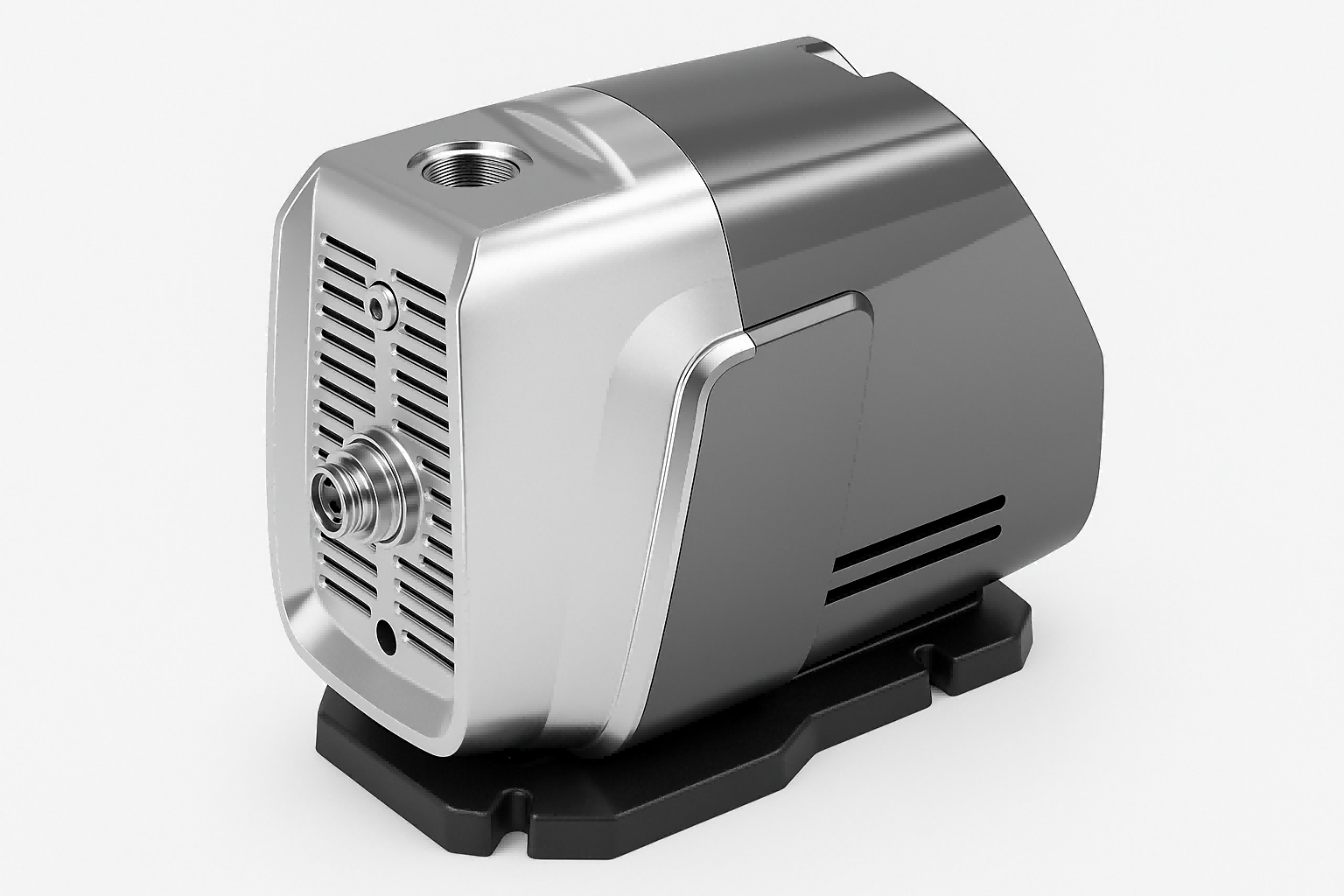
A pump's lifespan is not a matter of luck.
It is a result of deliberate engineering choices.
The signs of a failing pump often appear long before a total breakdown.
By understanding these signs, you can better evaluate the quality of the pumps you offer your customers.
Let's explore the common failure points and the modern technologies designed to prevent them.
This knowledge is crucial for building a reputation based on quality and reliability.
Water Leaks
A small drip from a pump seems harmless at first.
But this drip is often the first sign of a much larger, more expensive failure on the horizon.
Ignoring it can lead to catastrophic system damage.
Water leaks from a pump usually indicate that its internal seals are failing or that its body is corroding. Premium pumps prevent this with superior materials and advanced sealing technology. This ensures a dry, reliable, and long-lasting operation.
The Anatomy of a Leak
Leaks are the most visible symptom of a pump in distress.
They typically start small, as a slow drip or a bit of moisture around the pump body.
This happens when a critical barrier inside the pump has been compromised.
The mechanical seal, which separates the wet end from the dry motor, is a common point of failure.
Constant rotation, pressure, and heat can cause this seal to wear down over time.
Corrosion of the pump housing or fittings can also create pathways for water to escape.
Material Science: The First Line of Defense
The materials used in a pump are fundamental to preventing leaks.
Basic pumps might use cheaper plastics or standard-grade metals.
These materials are more susceptible to corrosion and wear.
High-quality pumps use superior materials by design.
- AISI304 Stainless Steel: This material is used for critical components like the impeller. It offers excellent resistance to corrosion and rust, even with varying water quality.
- Brass Components: Where appropriate, brass is used for its durability and resistance to corrosion.
- UV-Resistant Housing: The outer casing is often made from materials like advanced ABS plastic. This prevents the housing from becoming brittle and cracking when exposed to sunlight, a common issue for pumps installed outdoors.
These material choices directly translate to a longer, leak-free service life.
Advanced Sealing and Bearing Technology
A pump's seal doesn't work in isolation.
Its lifespan is directly affected by the stability of the main shaft.
This is where bearing quality becomes critical.
| Bearing Type | Key Advantages | Impact on Longevity |
|---|---|---|
| Standard Bearings | Lower initial cost. | Higher vibration, more noise, shorter lifespan. |
| Premium Bearings | 16% higher precision, 40% quieter operation. | Reduced shaft vibration, which extends seal life and results in an 11% longer bearing lifespan. |
By using high-precision bearings, the pump's shaft rotates more smoothly.
This reduces vibration and puts less stress on the mechanical seal, dramatically lowering the risk of a premature leak.
This system-wide approach to quality is what separates a world-class pump from an average one.
Grinding or Whining Noises
Are you hearing a strange grinding or high-pitched whining from your pump?
This is the sound of internal components failing under stress.
Ignoring these sounds is a gamble that almost always ends in a seized motor and a full system shutdown.
Unusual noises from a pump often mean there is a problem with the motor's bearings or the accessory belt. In modern PMSM pumps, these sounds are rare. They are built with high-precision components and a soft-start function to ensure ultra-quiet, long-lasting operation.
Noises are a pump's way of telling you that something is mechanically wrong.
In older pump designs, these noises are common as parts wear out.
A high-pitched whine often points to a worn or loose accessory belt.
A deeper grinding or growling sound is more serious.
This usually indicates that the internal bearings of the motor are failing.
The small metal balls inside the bearing are wearing down, creating friction, heat, and vibration.
This is a critical failure that requires immediate attention.
How Modern Motors Engineer Silence
The best modern pumps are designed to be almost silent from day one.
This quiet operation is a direct result of superior engineering in the motor.
They use a Permanent Magnet Synchronous Motor (PMSM) instead of a traditional induction motor.
- Permanent Magnet Rotor: This design is more efficient and eliminates the "hum" and vibration often associated with older motors.
- High-Precision Bearings: As mentioned before, premium bearings run smoother and are up to 40% quieter than standard ones.
- Advanced Stator Design: Using high-grade 600-grade silicon steel and Class F insulation wire, the stator operates with less energy loss and a lower temperature rise (≤50K), contributing to quieter and more reliable performance.
The target noise level for these pumps is often ≤50dB, which is quieter than a library.
The Importance of Soft Start and Stop
One of the biggest causes of mechanical stress is the sudden jolt of starting and stopping.
Traditional pumps turn on at full power instantly.
This creates a huge torque shock on the motor and a hydraulic shock, known as water hammer, in the pipes.
Modern VFD pumps use a different approach.
| Function | Description | Benefit |
|---|---|---|
| Soft Start | The VFD controller gradually ramps up the motor's speed. | Reduces mechanical stress on bearings and seals. Prevents water hammer. |
| Soft Stop | The controller gradually ramps the motor's speed down. | Protects the plumbing system and internal components from shock. |
This gentle start and stop cycle drastically reduces wear and tear on every mechanical component.
It extends the life of the bearings, the seals, and the motor itself.
It is a key feature that contributes to a significantly longer operational lifespan.
Overheating
An overheating pump is a system in crisis.
It means the pump can no longer cool itself, leading to rapid component failure and a potential fire hazard.
Continuing to run it risks permanent damage to the motor and electronics.
A pump overheats when its cooling system fails or when it is working too hard due to a problem like a leak. Advanced pumps feature robust thermal management, including intelligent protections and superior physical cooling designs, to prevent overheating and ensure a long, safe operational life.
Why Pumps Overheat
Overheating is a critical symptom that should never be ignored.
There are several reasons why a pump might get too hot.
A loss of water means the pump is running dry.
Water is not just what the pump moves; it's also a primary coolant.
Without it, the mechanical seal and internal parts heat up very quickly.
Electrical problems can also cause overheating.
If the incoming voltage is too high or too low, the motor will struggle and draw more current, generating excess heat.
Finally, physical blockages can be a cause.
If the pump's cooling fins are covered in dirt or if the fan is broken, it cannot dissipate the heat it naturally generates during operation.
Modern Cooling System Design
Preventing overheating is a priority in high-quality pump design.
This is achieved through a combination of physical design and material choice.
- Enhanced Airflow Design: The motor housing is engineered to maximize air circulation. This can improve airflow by up to 15% compared to standard designs.
- High-Efficiency Heat Dissipation: The materials and shape of the housing are optimized to radiate heat away from the motor. A well-designed pump can have a heat dissipation efficiency of over 87%.
- Superior Motor Internals: The use of high-grade stator materials and efficient windings means the motor generates less waste heat in the first place. A lower temperature rise (≤50K) is a key indicator of a thermally efficient motor.
These physical features create a robust passive cooling system.
Intelligent Thermal Protection
The most advanced pumps add a layer of intelligent software protection.
The pump's controller constantly monitors temperatures using built-in sensors.
It watches for several potential thermal events.
| Protection Function | Trigger | System Response |
|---|---|---|
| Driver Board Overheating | PCB temperature exceeds a safe limit (e.g., >85°C). | The pump will automatically stop to prevent damage to the electronics. |
| High Water Temperature | Water being pumped is too hot (e.g., >75°C). | The pump will stop to protect its internal seals and components. |
| Short-time Overheating | A sudden, rapid spike in motor temperature. | Immediate shutdown to prevent catastrophic failure. |
This "14-Shield" protection system acts as a vigilant guardian for the pump.
It can shut the pump down before permanent damage occurs, preserving the hardware and alerting the user to an underlying problem in the system.
Poor Circulation
Is the water pressure in your system weak or fluctuating?
This is a sign of poor circulation, meaning your pump is struggling to do its job.
This not only causes user frustration but also forces the pump to work harder, accelerating wear and shortening its life.
Poor circulation happens when a pump is dying or is not properly regulated. A modern VFD pump solves this by using a smart controller and pressure sensors. It automatically adjusts its speed to provide a powerful, constant pressure supply, ensuring optimal circulation at all times.
Poor circulation means the pump is no longer moving water with enough force.
It is like a heart that is too weak to pump blood effectively.
In a pump, this can be caused by several factors.
Internal wear is a primary cause.
A worn or damaged impeller cannot "grab" the water and push it forward efficiently.
A blockage in the system, either before or after the pump, can also restrict flow and create the illusion of poor circulation.
In simpler pumps, the lack of intelligent control is the problem.
They run at a single speed, which may be too low for peak demand, causing pressure to drop.
The VFD Solution for Constant Pressure
The gold standard for solving circulation problems is a Variable Frequency Drive (VFD).
This technology makes the pump truly intelligent.
- Pressure Sensor: A sensor in the system constantly measures the water pressure.
- VFD Controller: This is the brains of the pump. It reads the data from the pressure sensor.
- Motor Speed Adjustment: If the pressure drops below the user's setpoint (e.g., when a faucet is opened), the VFD instantly increases the motor's speed. If the pressure rises, it slows the motor down.
This creates a closed-loop system that delivers a perfectly stable, constant water pressure regardless of demand.
Users never experience weak flow, and the pump only uses the exact amount of energy needed.
The Role of the Pressure Tank
Even with a VFD, a small pressure tank plays a vital role in system longevity.
A tank is a small reservoir that holds a reserve of pressurized water.
- Reduces Pump Cycling: For very small water uses, like a dripping tap or filling a glass of water, the system can draw from the tank without starting the pump. This can reduce the number of times the pump starts and stops by over 70%.
- Absorbs Water Hammer: The tank's air cushion helps to absorb pressure spikes in the system, further protecting the pump and plumbing.
- Backup Pressure: It provides a small amount of pressure even if the pump is momentarily off.
By reducing the frequency of on/off cycles, a pressure tank significantly reduces wear on the motor and electrical components.
It works in synergy with the VFD to create a system that is not just powerful, but also highly durable and efficient.
Pump Corrosion
Have you noticed a build-up of gunk or rust on your pump's body?
This is not just a cosmetic issue; it is a clear sign of corrosion.
Corrosion is like a cancer for a pump, slowly eating away at its structure and leading to leaks and eventual failure.
Corrosion occurs when a pump's materials react with water and air. The ultimate solution is to make the sensitive electronics completely immune to this. Top-tier pumps achieve this by fully sealing their main controller board in a waterproof compound, making it impervious to moisture.
How Corrosion Destroys a Pump
Corrosion is a chemical process that breaks down metal.
In a pump, this is usually caused by constant exposure to water, especially if the water has a high mineral content.
A slow, undetected leak is a major cause of corrosion.
The moisture allows a "gel" of coolant residue and corroded metal to form on the pump's exterior.
This is a definite sign that the pump's seals have failed and that the body itself is being compromised.
However, the most vulnerable part of a modern pump is not its metal body.
It is the delicate electronic printed circuit board (PCB) that controls it.
Even a small amount of moisture or condensation can short out the PCB, rendering the entire pump useless.
The Ultimate Solution: PCB Potting
To solve the problem of electronic failure due to moisture, the best pump manufacturers use a technique called PCB potting.
The process is simple but incredibly effective.
- The main controller board (PCB) is placed inside its housing.
- A special epoxy or polyurethane resin is poured over the entire board.
- The resin hardens, completely encasing the PCB and all its sensitive components in a solid, 100% waterproof block.
This creates an impenetrable barrier.
| Feature | Benefit | Longevity Impact |
|---|---|---|
| IP67 Waterproof Rating | The electronics are completely sealed from moisture, dust, and insects. | Prevents over 95% of moisture-related electronic failures. |
| Vibration Dampening | The hardened resin helps to absorb micro-vibrations. | Protects solder joints and components from stress. |
| Thermal Conduction | The resin helps to conduct heat away from the components. | Keeps the electronics running cooler. |
This single feature is arguably one of the most important for ensuring a long service life in the real world.
It is projected to extend the life of the pump's controller by 3 to 5 years by making it immune to the environmental conditions that kill lesser pumps.
This technology represents a shift from simply resisting corrosion to eliminating it as a threat to the pump's most critical components.
Conclusion
A water pump's lifespan is not a mystery.
It is the direct result of superior engineering, quality materials, and intelligent protective systems that work together.
Choosing durability means choosing quality.
FAQs
How do you know if a water pump is going bad?
Common signs include visible leaks, new grinding or whining noises, an overheating motor, or a noticeable drop in water pressure.
What is the main cause of water pump failure?
The most common cause is the failure of internal seals or bearings due to normal wear and tear over time. Leaks and contamination accelerate this process.
Can a water pump fail without warning?
While rare, a sudden seizure of the motor or bearing can happen. However, there are usually subtle warning signs like noise or minor leaks beforehand.
How much does it cost to replace a water pump?
Costs vary widely depending on the type of pump and labor involved. Investing in a high-quality pump upfront is often cheaper than repeated replacements.
Is it worth replacing a water pump?
Yes, if the pump is essential for your water system. Replacing a failing pump prevents water damage, system downtime, and potential damage to other components.
Can you drive with a bad water pump?
This question applies to vehicle engines. For home or commercial systems, you should not run a bad water pump as it can lead to motor burnout or significant leaks.
What happens if you don't fix a bad water pump?
Ignoring a bad pump will lead to a complete failure. This results in a total loss of water pressure and risks water damage from leaks or electrical damage from an overheating motor.



